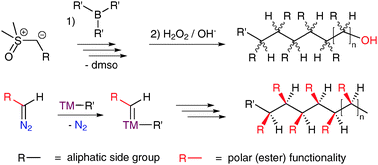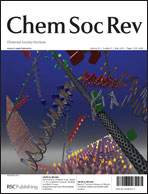C1 polymerisation and related C–C bond forming ‘carbeneinsertion’ reactions
Abstract
In this critical review we summarise the currently available ‘C1 ![[double bond, length as m-dash]](https://www.rsc.org/images/entities/char_e001.gif) C bond containing substrates (C2 monomers). In the general introduction (section 1) we comment on the availability of C1 monomers and the most important differences between C1 and C2
C bond containing substrates (C2 monomers). In the general introduction (section 1) we comment on the availability of C1 monomers and the most important differences between C1 and C2


 Please wait while we load your content...
Please wait while we load your content...